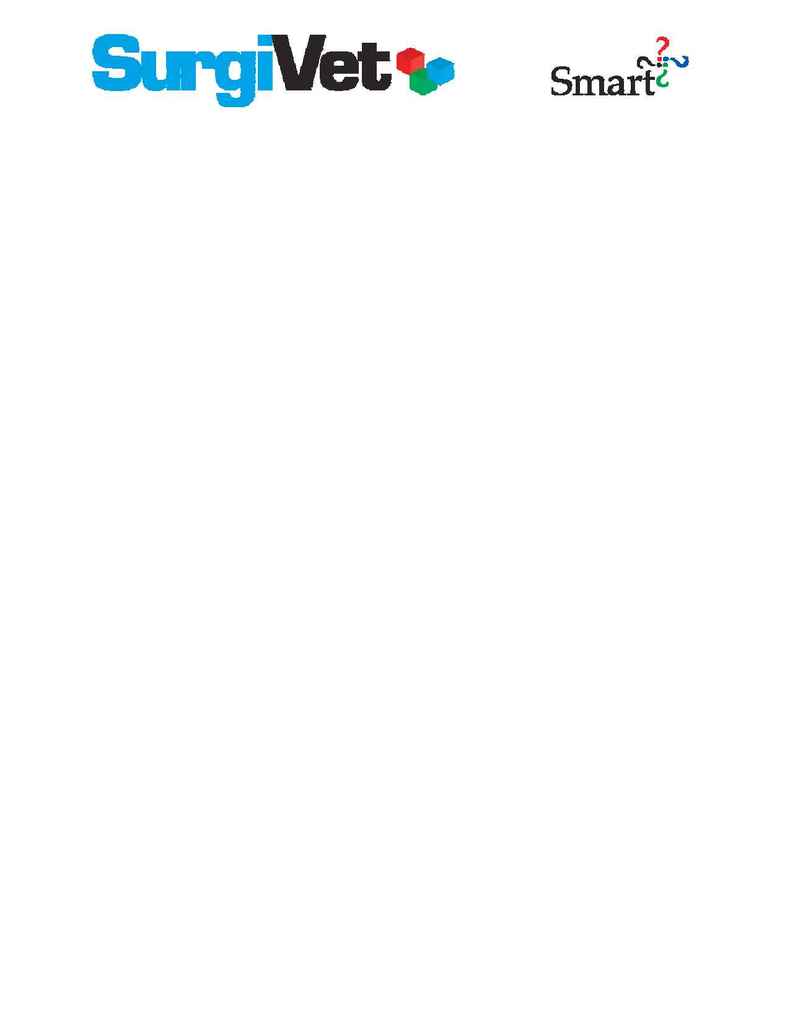
Veterinary Anesthesia and Monitoring Equipment
Page 3 of 3
SurgiVet, Inc.
N7 W22025 Johnson Road, Suite A
Waukesha, WI 53186 USA
Phone: 262-513-8500 Fax: 262-513-9069
www.surgivet.com
6.Why do I need another monitor besides my pulse oximeter?
Although pulse oximeters are very useful, they only tell you about the patient's
hemoglobin saturation. SpO2 is related to patient oxygenation via the ox hemoglobin
dissociation curve. So, by knowing SpO2, we can make a pretty good assumption about PaO2
(at least when the patient is breathing room air). When the pulse oximeter is getting a good
reading on a peripheral site, we also know that peripheral perfusion is good, but we don't know
much about blood pressure. The pulse oximeter reading may be good in a profoundly
hypotensive patient. The pulse oximeter also doesn't tell you about hypoventilation (ie, build-up
of carbon dioxide) which can cause acidosis. The hemoglobin saturation may be excellent even
when a severe respiratory acidosis exists.
7.Why can monitoring expired carbon dioxide be helpful?
Most anesthetics produce respiratory depression, which leads to a build up of carbon
dioxide. Monitoring expired carbon dioxide therefore provides another clue about depth of
anesthesia. ETCO2 also gives us information about problems within the breathing circuit (eg,
exhausted sodasorb, sticking valves, or leaks in machine), and problems with the patient (eg, the
intubation of one bronchus, esophageal intubation, or decreased cardiac output). Monitoring
expired carbon dioxide doesn't totally eliminate the need for blood gas evaluation, but it does
provide another piece of the puzzle.
